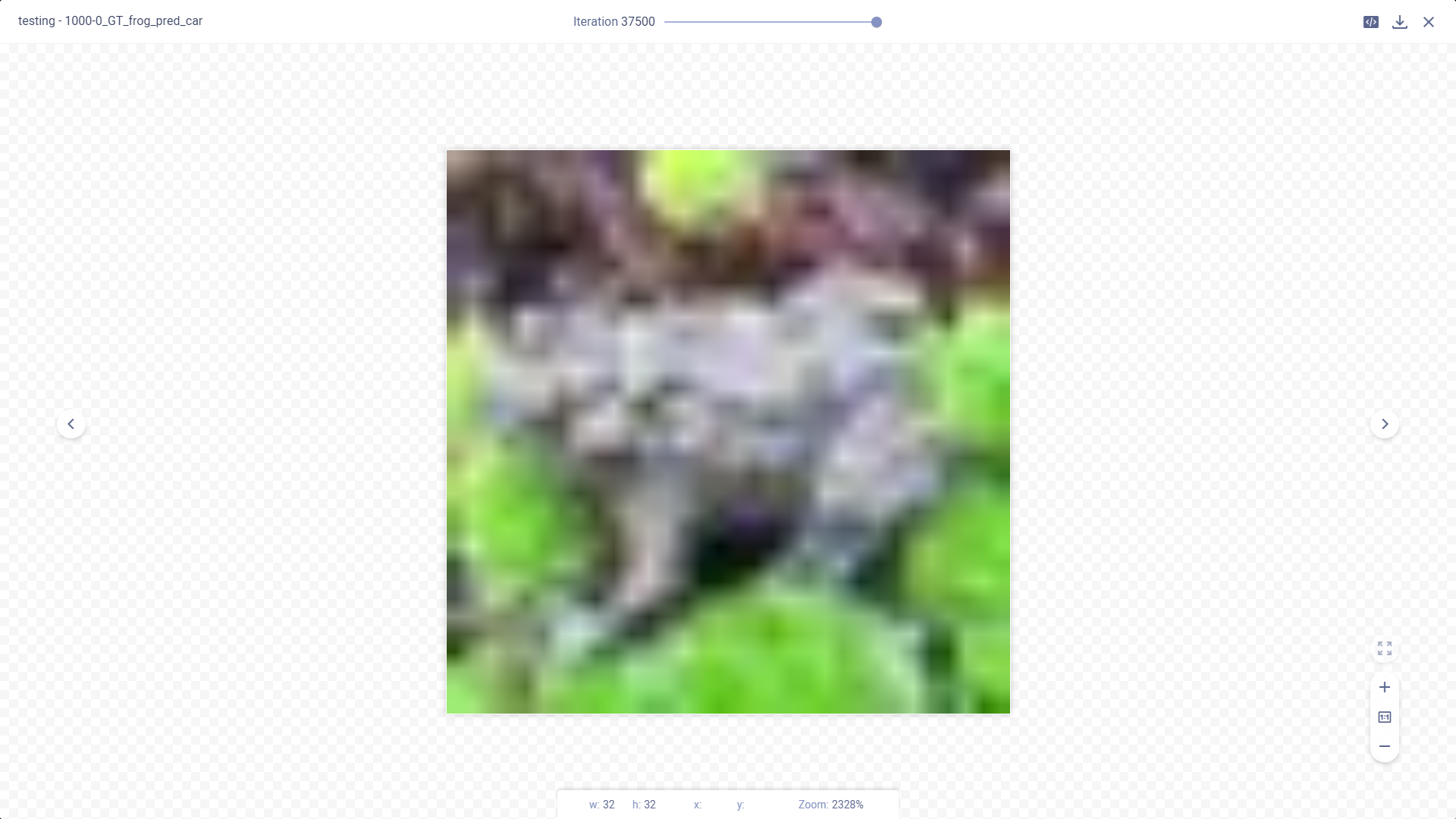Image Classification - Jupyter Notebook
The example image_classification_CIFAR10.ipynb
demonstrates integrating ClearML into a Jupyter Notebook, which uses PyTorch, TensorBoard, and TorchVision to train a
neural network on the CIFAR10 dataset for image classification. ClearML automatically logs the example script's
calls to TensorBoard methods in training and testing which report scalars and image debug samples, as well as the model
and console log. The example also demonstrates connecting parameters to a Task and logging them. When the script runs,
it creates an experiment named image_classification_CIFAR10 in the Image Example project.
Another example optimizes the hyperparameters for this image classification example (see the Hyperparameter Optimization - Jupyter Notebook documentation page). This image classification example must run before the hyperparameter optimization example.
Scalars
The accuracy, accuracy per class, and training loss scalars are automatically logged, along with the resource utilization plots (titled :monitor: machine), and appear SCALARS.

Debug Samples
The image samples are automatically logged and appear in DEBUG SAMPLES.

By doubling clicking a thumbnail, you can view a spectrogram plot in the image viewer.

Hyperparameters
ClearML automatically logs TensorFlow Definitions. A parameter dictionary is logged by connecting it to the Task using
Task.connect().
configuration_dict = {'number_of_epochs': 3, 'batch_size': 4, 'dropout': 0.25, 'base_lr': 0.001}
# enabling configuration override by clearml
configuration_dict = task.connect(configuration_dict)
Parameter dictionaries appear in CONFIGURATION > HYPERPARAMETERS > General.

TensorFlow Definitions appear in the TF_DEFINE subsection.

Console
Text printed to the console for training progress, as well as all other console output, appear in CONSOLE.
